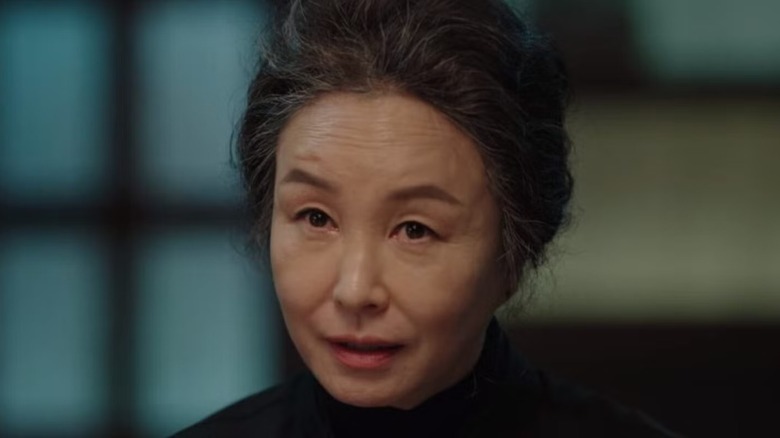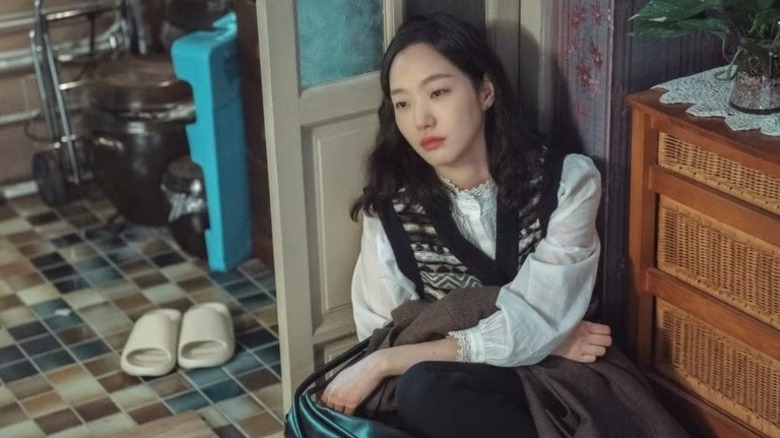The Controversial (But Adored) K-Drama Based On A Classic American Novel
American author Louisa May Alcott's "Little Women" has received numerous adaptations since its initial publication in 1868, but one of the most unique comes from South Korea. Premiering in 2022, the K-drama version of "Little Women" uses Alcott's 19th century familial drama as more of a loose springboard for its thriller tale. The series has since become a worldwide hit in most territories, though not without attracting a fair amount of controversy for multiple incidents. Here is everything you need to know about the K-drama "Little Women" and what sparked the international backlash around the show.
The K-drama iteration of "Little Women" is set in present-day South Korea and follows the financially struggling Oh sisters. As opposed to Alcott's story, there are only three sisters in this series, with the two older sisters involved in a case that places their family in harm's way. This comes as the sisters receive a sizable inheritance, only to find powerful forces working against them to prevent this payout. The three sisters' stories dovetail together, both in resolving the case that they're investigating and resolving their financial woes.
With so many significant deviations from the source material, here's how the K-drama uses the original "Little Women" as its narrative inspiration.
How the K-drama Little Women compares to the original story
The broader similarities between Alcott's "Little Women" and the incredibly loose K-drama adaptation can be seen in the sisters' personalities. The eldest sister, Oh In-jo (Kim Go-eun), evokes Meg March's dignified poise and romantic nature. Meanwhile, the middle sister, Oh In-kyung (Nam Ji-hyun), is the incisive rabble-rouser like Jo, working diligently as an investigative journalist. Finally, there's the youngest sister, Oh In-hye (Park Ji-hu), who's naive and idealistic like Amy and attending a fine arts high school at the start of the show.
With those archetypes in place, the K-drama veers into social commentary through the lens of a dramatic thriller. Like "Parasite," many contemporary Korean stories contain themes about the widening wealth divide and the immense difficulties of extracting one's self from financial hardship. Also explored are the perils of corporate malfeasance, a common antagonistic presence in K-drama thrillers. These are modern problems for a modern "Little Women," and the Oh sisters' conflicts are definitely signs of the times and culture.
How the K-drama Little Women attracted controversy
Though it was popular in Korea and found success with international audiences through its availability on Netflix, this version of "Little Women" was surprisingly controversial. One of the older characters in the series fought in the Vietnam War alongside the Americans decades prior to the start of the story. Vietnamese audiences felt this glorified South Korean involvement in the war, particularly as said character's unit is described having each killed at least 20 Vietcong. Another episode contained a map of contested territorial waters near Vietnam, with Vietnamese Netflix pulling "Little Women" in the face of the controversy.
Another source of controversy came from the promotional campaign for "Little Women," particularly over matters of plagiarism. At least two promotional images for the show were noticed to be eerily similar to Japanese cosmetics advertising materials. In response to these incidents, the show's production team and original Korean network, tvN, issued formal apologies. Fortunately, these controversies did not noticeably diminish the series' success (at least outside Vietnam), with "Little Women" remaining a commercial and critical darling during its broadcast run.
For those interested in checking out the most unique take on "Little Women" to date, the series is currently available to stream on Netflix.


